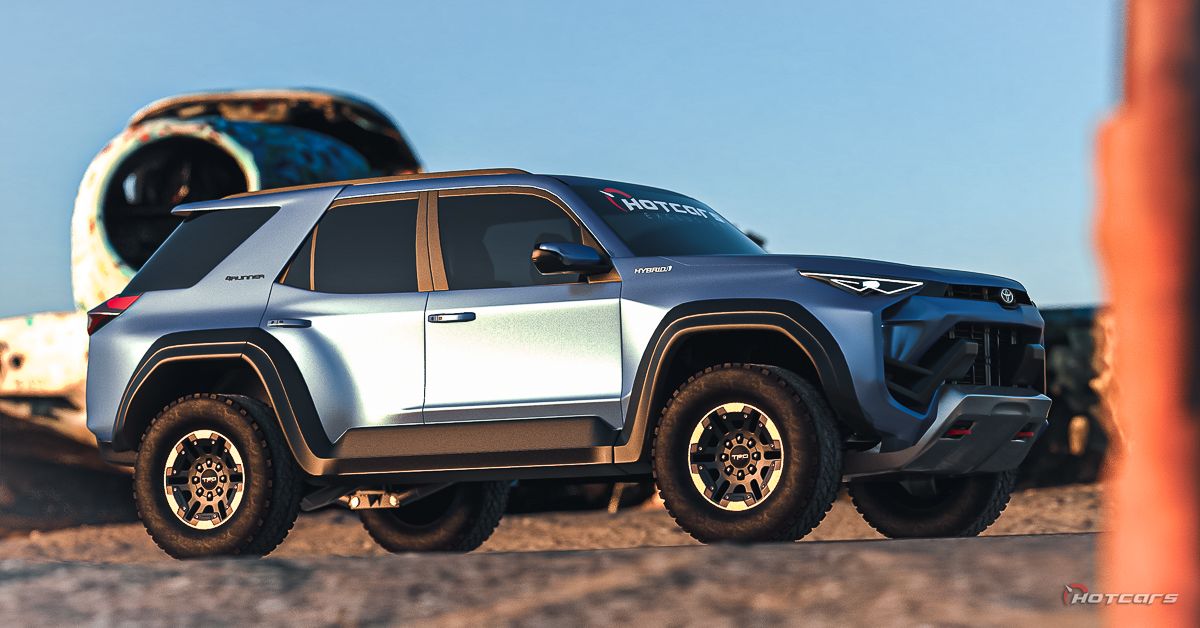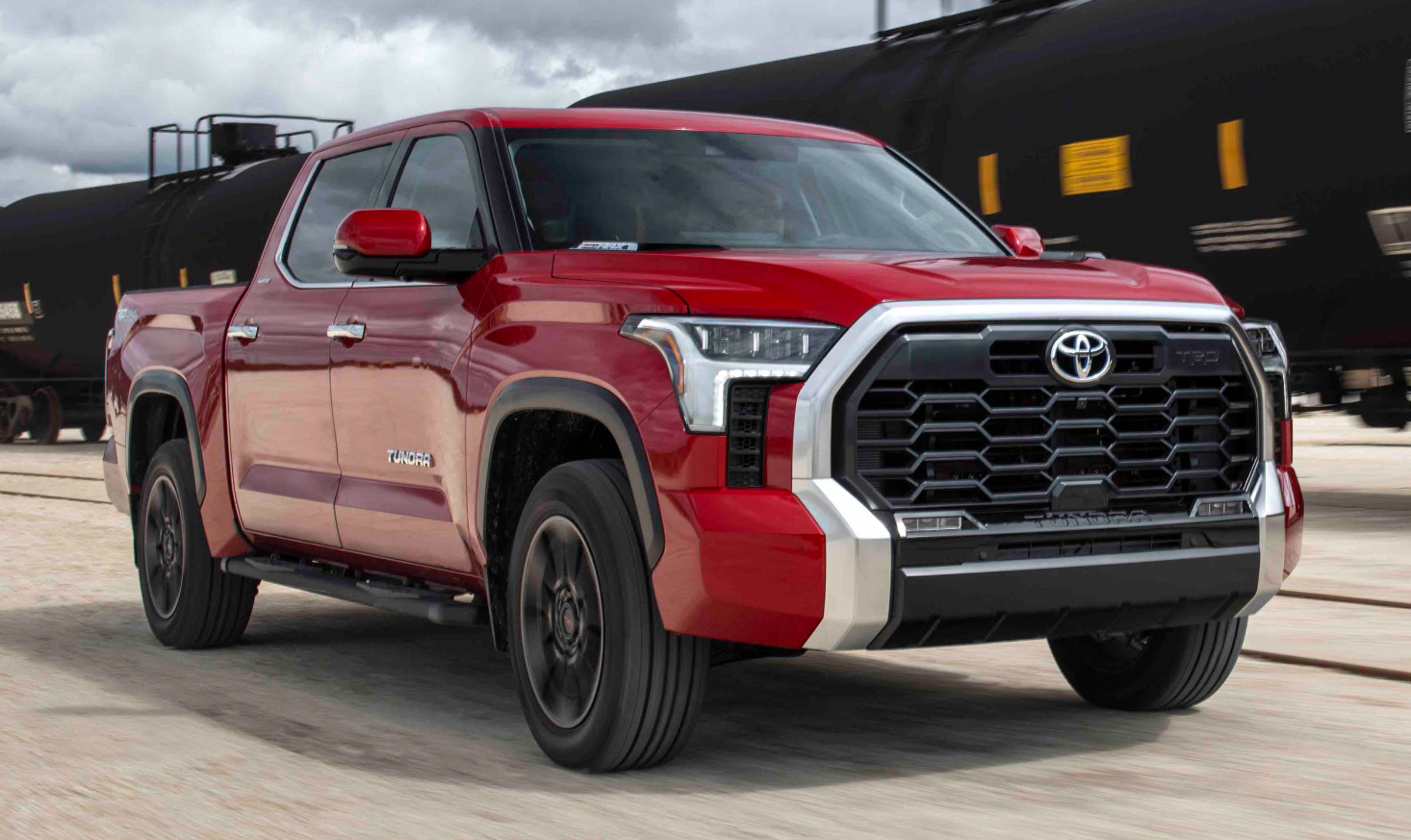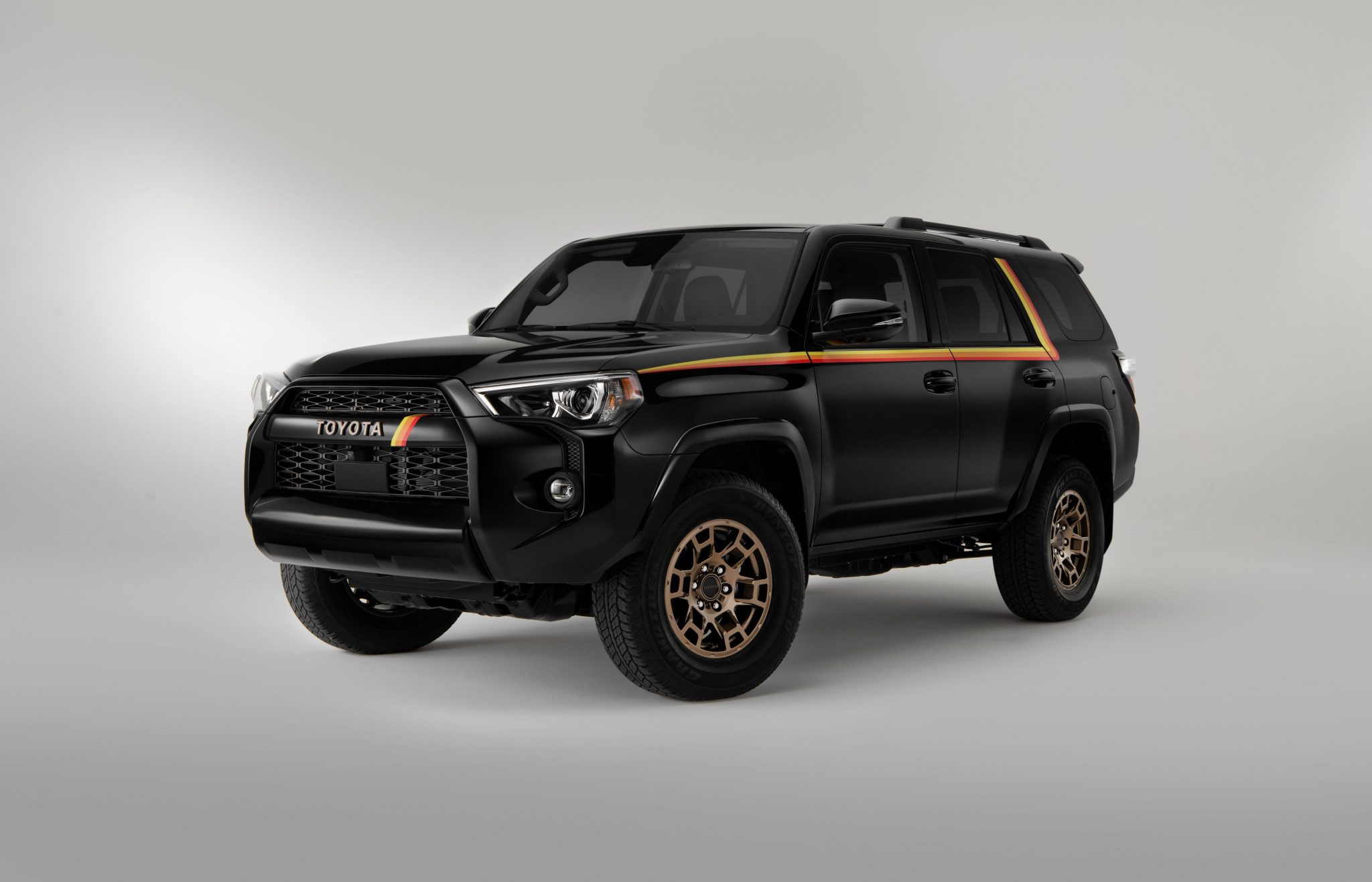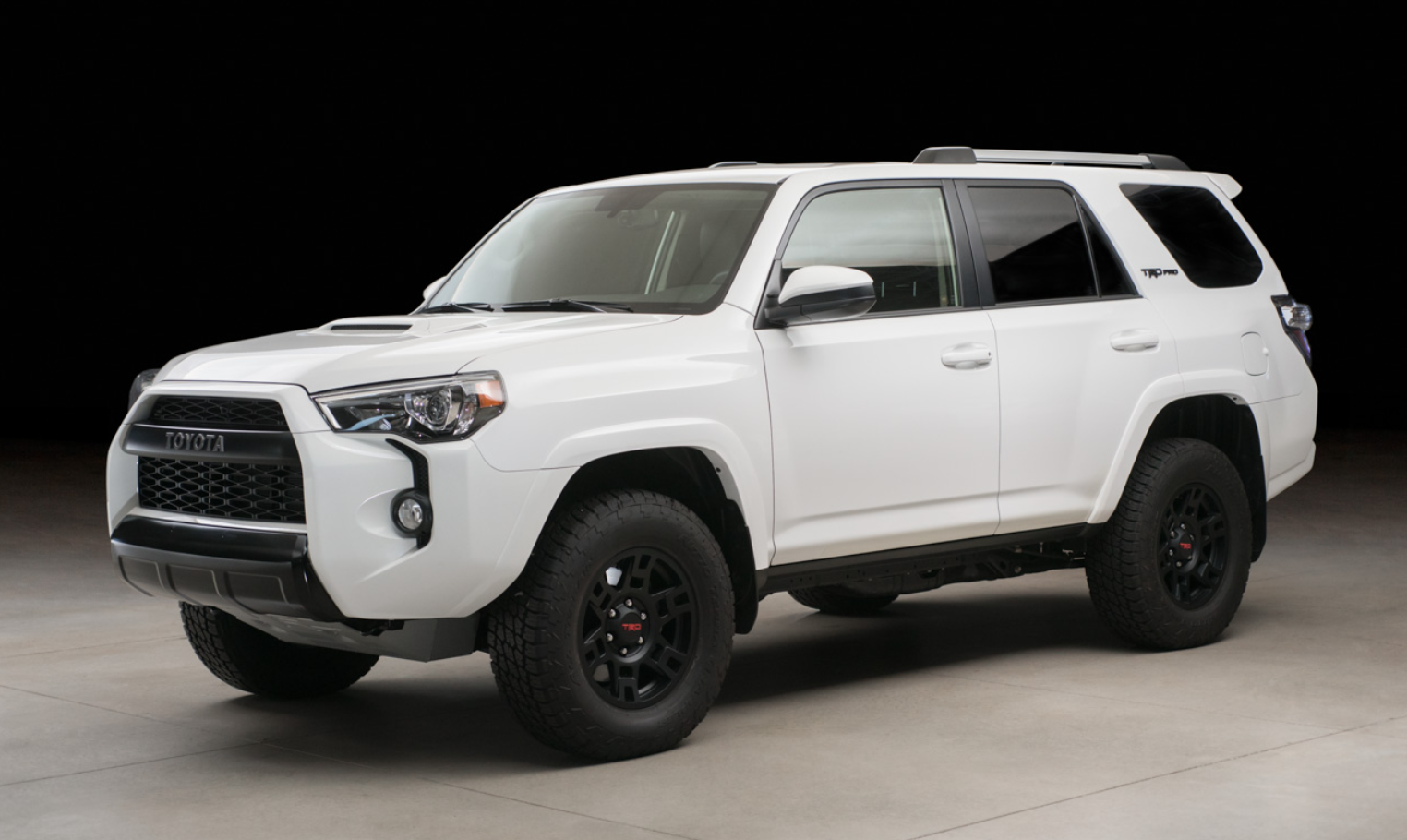Rolling Into The Future: A Comprehensive Guide To Wheels For The 2025 Toyota 4Runner
Rolling into the Future: A Comprehensive Guide to Wheels for the 2025 Toyota 4Runner
Related Articles: Rolling into the Future: A Comprehensive Guide to Wheels for the 2025 Toyota 4Runner
Introduction
With enthusiasm, let’s navigate through the intriguing topic related to Rolling into the Future: A Comprehensive Guide to Wheels for the 2025 Toyota 4Runner. Let’s weave interesting information and offer fresh perspectives to the readers.
Table of Content
Rolling into the Future: A Comprehensive Guide to Wheels for the 2025 Toyota 4Runner

The Toyota 4Runner, a rugged and reliable SUV, has long been a favorite among off-road enthusiasts and everyday drivers alike. As the 2025 model year approaches, anticipation for the next generation 4Runner is high. While the exact specifications remain under wraps, one area that will undoubtedly attract attention is the selection of wheels.
Wheels are not merely aesthetic enhancements; they are crucial components that directly impact the 4Runner’s performance, handling, and overall driving experience. Understanding the nuances of wheel selection for the 2025 4Runner is paramount to maximizing its capabilities and ensuring a safe and enjoyable ride.
Delving Deeper into Wheel Anatomy
Before exploring specific wheel choices for the 2025 4Runner, it’s essential to grasp the fundamental components that define a wheel:
- Diameter: Measured in inches, this refers to the overall size of the wheel, affecting ground clearance and ride height.
- Width: Also measured in inches, this determines the width of the tire that can be mounted on the wheel, impacting stability and grip.
- Bolt Pattern: This refers to the number and arrangement of lug holes on the wheel, ensuring proper fitment to the vehicle’s hub.
- Offset: This measurement indicates the distance between the wheel’s mounting surface and the center of the wheel, influencing wheel position relative to the vehicle’s suspension.
- Backspacing: The distance between the mounting surface and the inner edge of the wheel, impacting tire clearance and potential rubbing.
- Material: Wheels can be constructed from various materials, including steel, aluminum, and forged aluminum, each offering unique benefits in terms of strength, weight, and cost.
Choosing the Right Wheels for Your 2025 4Runner
The ideal wheel choice for your 2025 4Runner will depend heavily on your intended usage and desired driving characteristics. Here’s a breakdown of common wheel types and their associated benefits:
1. Stock Wheels: The factory-installed wheels are designed to provide a balance of performance and comfort. They are often the most cost-effective option and typically offer good durability.
2. Aftermarket Wheels: These offer a wide range of options in terms of style, size, and material. They can enhance the 4Runner’s appearance, improve performance, and provide greater customization.
3. Off-Road Wheels: Designed for rugged terrain, these wheels feature robust construction, increased strength, and often larger diameters for greater ground clearance.
4. Performance Wheels: Focused on handling and responsiveness, these wheels are typically lightweight and have a wider rim width for improved tire contact and grip.
5. Custom Wheels: Crafted to specific requirements, these wheels offer unparalleled personalization, allowing for unique designs and optimized fitment.
Key Considerations for Wheel Selection:
- Intended Usage: Determine whether you primarily use your 4Runner for daily driving, off-road adventures, or a combination of both.
- Tire Size: Ensure the chosen wheel is compatible with the desired tire size and that the combination fits within the vehicle’s wheel wells.
- Performance Goals: Consider whether you prioritize handling, off-road capability, or a balance of both.
- Budget: Wheel prices vary significantly depending on material, design, and brand.
- Style: Choose a wheel that complements your 4Runner’s aesthetics and personal preferences.
Navigating the Wheel Selection Process
Once you’ve established your requirements and preferences, navigating the vast array of wheel options can be overwhelming. Here’s a structured approach to ensure a successful selection:
1. Research and Gather Information:
- Consult reputable online resources, forums, and automotive magazines for expert opinions and reviews.
- Explore manufacturers’ websites for detailed specifications, compatibility information, and warranty details.
2. Consult with Professionals:
- Seek advice from experienced mechanics, tire specialists, or off-road experts.
- Discuss your specific needs and receive personalized recommendations.
3. Consider Compatibility and Fitment:
- Verify the wheel’s bolt pattern, offset, and backspacing match your 2025 4Runner’s specifications.
- Use online wheel fitment calculators or consult with a tire specialist to ensure proper fitment.
4. Evaluate Aesthetics and Performance:
- Choose a wheel that complements your 4Runner’s design and aligns with your driving style.
- Consider the wheel’s weight, strength, and ability to handle your intended usage.
5. Finalize Your Decision:
- Weigh the pros and cons of each shortlisted wheel option.
- Compare prices, warranties, and availability before making your final choice.
Frequently Asked Questions (FAQs) about Wheels for the 2025 4Runner
Q: What are the standard wheel sizes for the 2025 4Runner?
A: While specific details for the 2025 model are yet to be released, the current generation 4Runner typically offers various wheel sizes depending on trim level and configuration. Common sizes include 17 inches, 18 inches, and 20 inches.
Q: Can I upgrade to larger wheels on my 2025 4Runner?
A: Upgrading to larger wheels is possible, but it’s crucial to ensure compatibility and proper fitment. Consult with a tire specialist or use online fitment calculators to determine the maximum allowable wheel size for your specific 4Runner model.
Q: What are the benefits of larger wheels?
A: Larger wheels can offer a more aggressive stance, improved ground clearance, and potentially enhance handling. However, they may also increase unsprung weight, affect ride comfort, and potentially require modifications to the suspension.
Q: What are the benefits of smaller wheels?
A: Smaller wheels typically offer a smoother ride, lower unsprung weight, and potentially better fuel economy. However, they may limit ground clearance and off-road capabilities.
Q: What is the best wheel material for off-road use?
A: For off-road use, steel wheels are often preferred due to their strength and durability. However, aluminum wheels offer a lighter weight, which can improve handling and fuel efficiency.
Q: Can I mix and match wheels on my 2025 4Runner?
A: It’s generally not recommended to mix and match wheels on a vehicle, as this can affect handling, braking, and tire wear. Ensure all four wheels are identical in size, bolt pattern, offset, and backspacing for optimal performance and safety.
Q: How do I know if my wheels are properly balanced?
A: Unbalanced wheels can cause vibrations, uneven tire wear, and potentially damage to your vehicle’s suspension. It’s essential to have your wheels professionally balanced after installation.
Q: How often should I rotate my tires?
A: Tire rotation helps to distribute wear evenly across all tires, maximizing their lifespan. It’s generally recommended to rotate tires every 5,000 to 7,500 miles or according to your vehicle’s owner’s manual.
Tips for Selecting Wheels for Your 2025 4Runner:
- Prioritize Safety: Always ensure that the chosen wheels are compatible with your 4Runner’s specifications and meet safety standards.
- Consider Weight: Lighter wheels can improve handling and fuel efficiency, while heavier wheels may offer greater durability.
- Explore Options: Don’t limit yourself to the first few options you encounter. Research and compare different brands, styles, and materials to find the best fit for your needs.
- Consult with Professionals: Seek guidance from experienced mechanics, tire specialists, or off-road experts to ensure you make informed decisions.
- Maintain Proper Tire Pressure: Regularly check and adjust tire pressure to ensure optimal performance, handling, and fuel efficiency.
Conclusion:
Selecting the right wheels for your 2025 Toyota 4Runner is a crucial step in customizing your vehicle to meet your specific requirements and driving preferences. By understanding the nuances of wheel anatomy, considering your intended usage, and carefully navigating the selection process, you can ensure that your 4Runner rolls confidently and comfortably into the future, ready to tackle any adventure that comes its way.








Closure
Thus, we hope this article has provided valuable insights into Rolling into the Future: A Comprehensive Guide to Wheels for the 2025 Toyota 4Runner. We hope you find this article informative and beneficial. See you in our next article!
You may also like
Recent Posts
- The 2025 Toyota 4Runner: A Legacy Reimagined
- The Enduring Appeal Of The Toyota 4Runner Manual Transmission 4×4
- The Toyota 4Runner TRD Off-Road: A Legacy Of Adventure, Reimagined For 2025
- The Anticipation Builds: Unveiling The Next Generation Toyota 4Runner
- The 2025 Toyota 4Runner TRD: A Legacy Of Adventure Reimagined
- The Future Of Color: Exploring The Significance Of Color Trends
- The Toyota 4Runner: A Legacy Of Capability, Now With Expanded Seating
- The Toyota 4Runner Timing Belt: A Vital Component For Engine Longevity
Leave a Reply